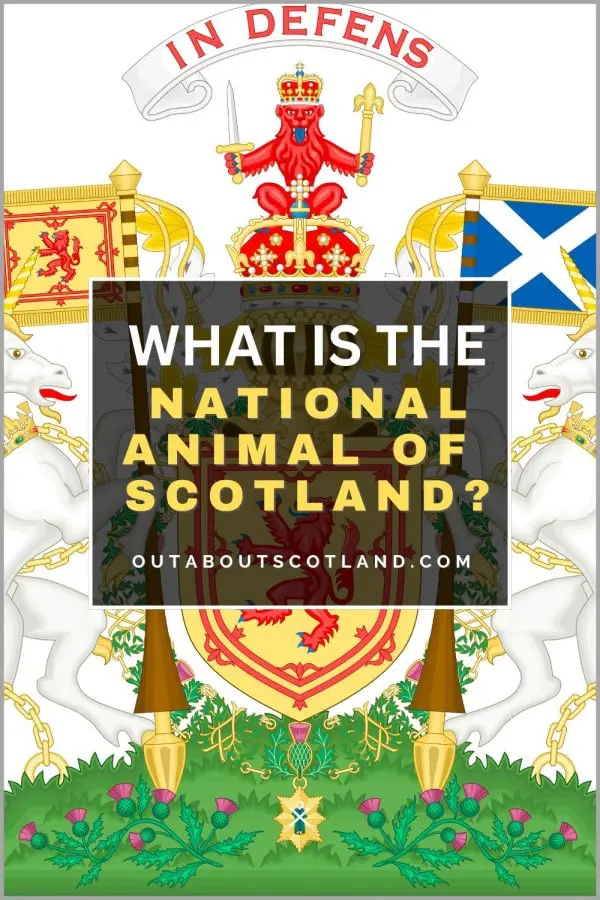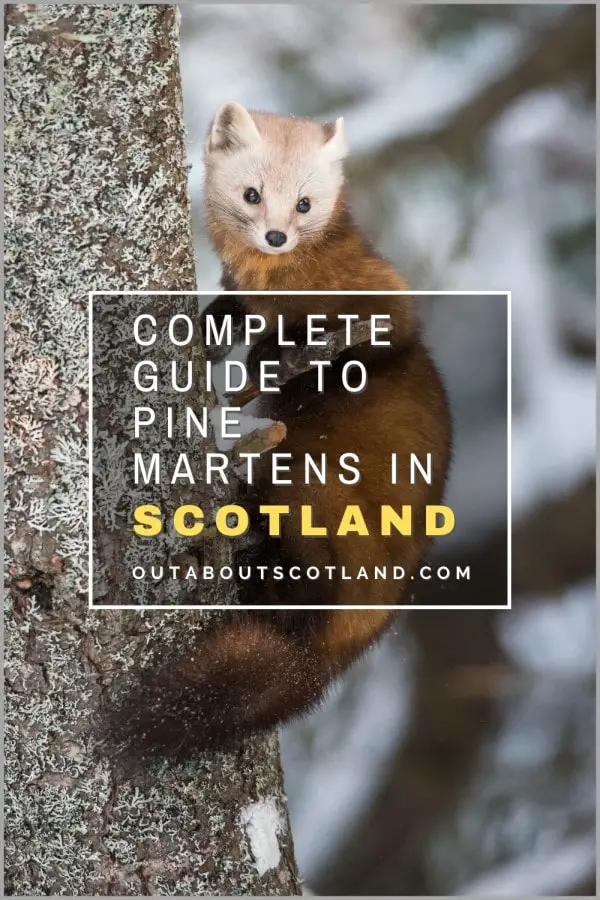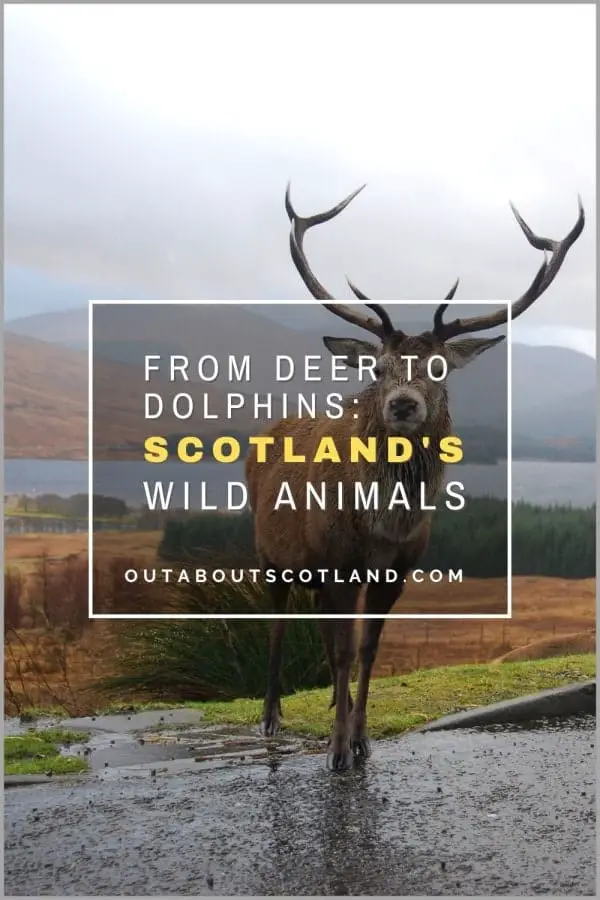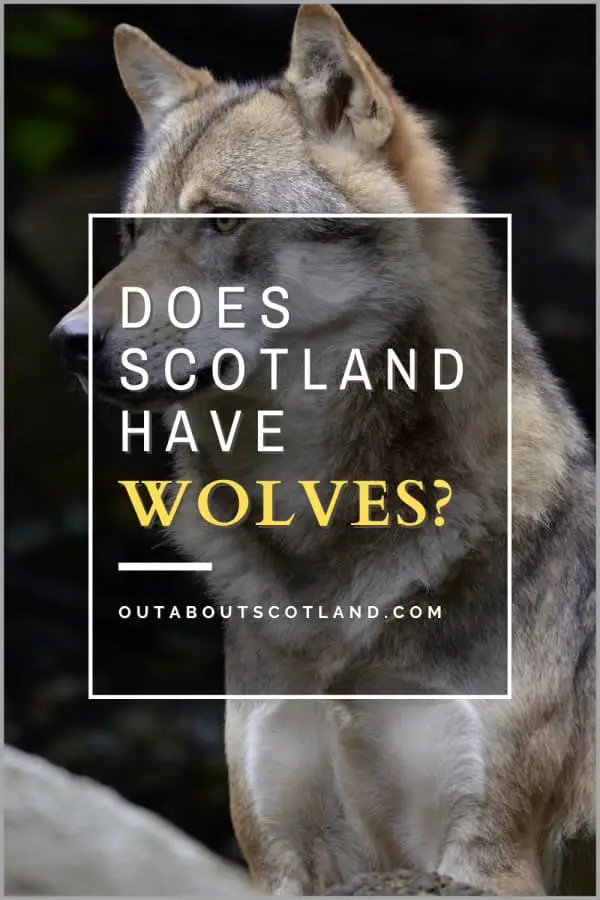Visit Scotland, and you’ll soon discover that it’s buzzing with a riot of chirps, cheeps, squeaks, and pips. Scotland is rightly proud of its wildlife, and thanks to the fact that much of the country is uninhabited, many endangered animals can thrive, including the ever-popular red squirrel and the near-extinct sea eagle.
Some of the most commonly seen wild animals in Scotland include red deer, roe deer, foxes, rabbits, and hares, as well as several native bird species such as buzzards, red kites, and peregrine falcons.
It’s a known fact that this country is one of the best in Europe for wildlife watching, and animal-themed sightseeing tours are fast becoming one of the top activities for tourists, though many first-time visitors are unaware of exactly which animals they’re likely to see.
In this article, you’ll find facts about some of the animals that you should keep an eye open for during a trip to Scotland, whether you’re roaming across the rolling hills of the Scottish Borders or the dramatic mountain ranges of the Highlands.
Pine Marten
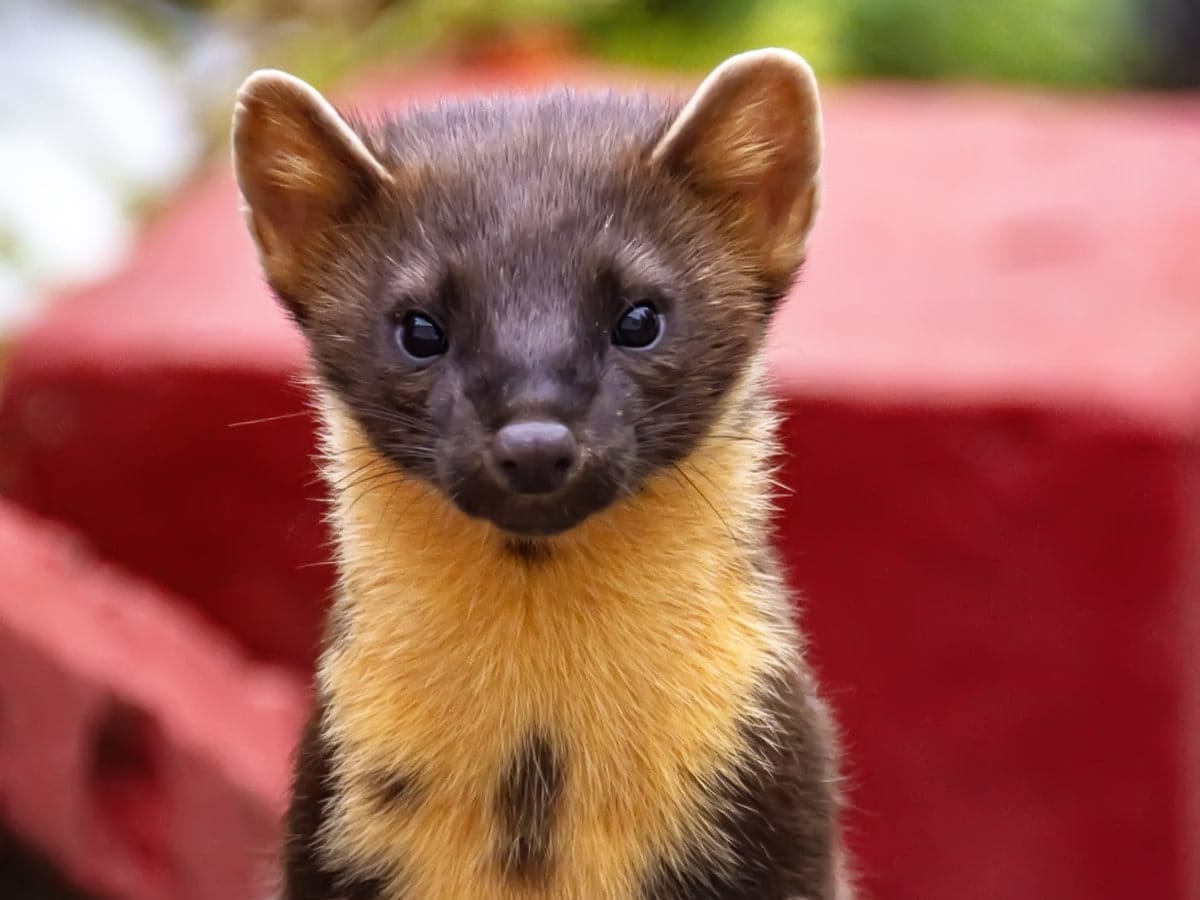
When it comes to rare wild animals in Scotland, the pine marten is the first animal that springs to mind for most people. Pine martens are small, carnivorous mammals that are native to Europe and Asia. They’re actually a member of the weasel family and are closely related to the American marten, but unlike their North American cousins, the population in Scotland is less than 4,000.
Pine martens are known for their long slender bodies and thick glossy fur which is typically brown or reddish-brown. They are generally solitary animals, but females may have a small territory overlapping with those of other females.
They’re agile climbers and can often be found in forests where they hunt small animals such as rodents, birds, and insects, but they’re also skilled at catching fish and have been known to raid ponds in the occasional garden.
Pine martens tend to prefer mature coniferous forests but they can also be found in deciduous forests, heaths, and moorlands. They’re distributed throughout the Highlands and Islands of Scotland as well as in the Southern Uplands, the Central Lowlands, and the Grampian Mountains. The UK Biodiversity Action Plan classifies pine martens as a priority species and provides legal protection for them in Scotland.
Protect Your Family From Scotland's Biting Midges
- Powerful, reliable protection for up to 8 hours
- Water- and sweat resistant
- Repels midges, mosquitoes, horse flies, sand flies, fleas and ticks
- Safe for use on adults, children over 30 months and pregnant women
- Non-sticky, moisturising with a pleasant fragrance
- Packaging may vary
Scottish Wildcat
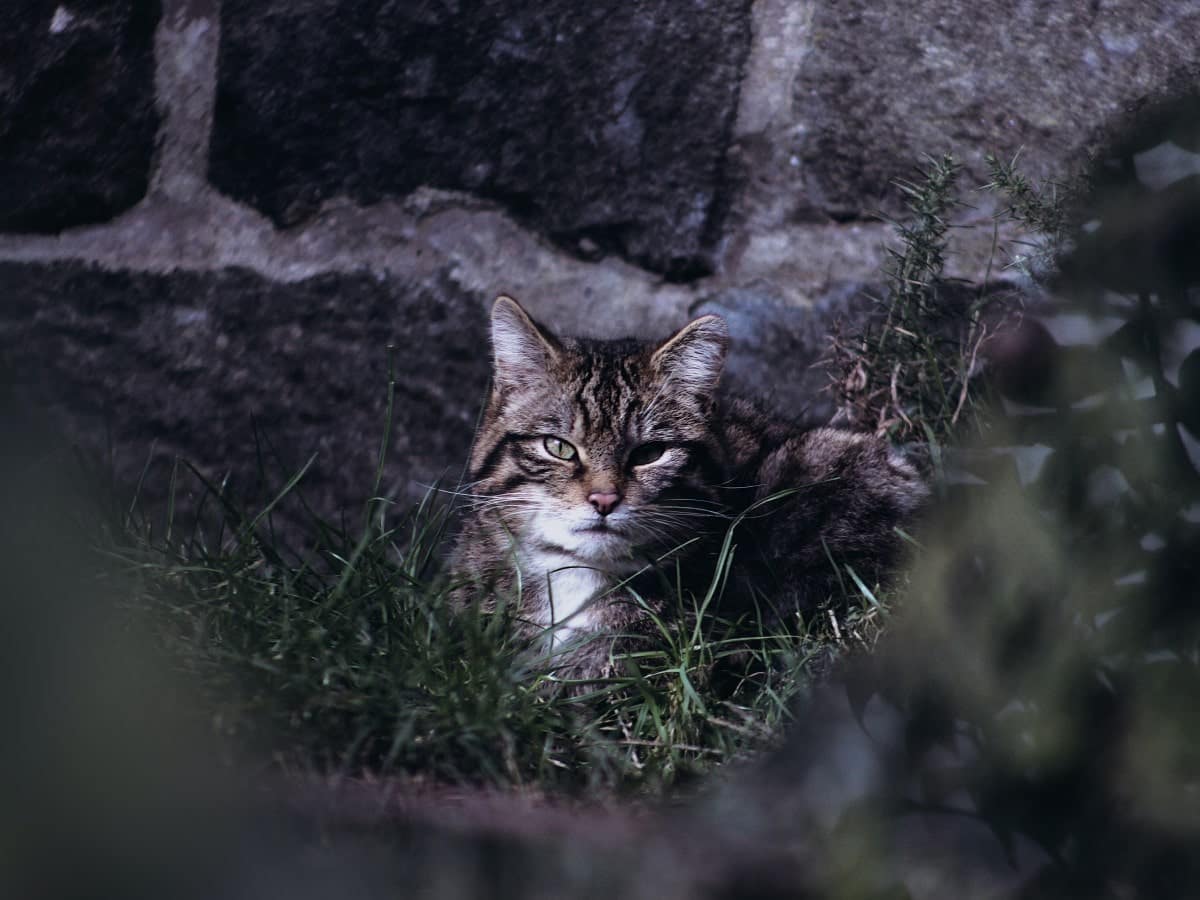
There are no dangerous animals in the Scottish Highlands but this voracious hunter is the apex predator in some areas. The Scottish wildcat (Felis silvestris grampia) is a subspecies of the European wildcat (Felis silvestris) that’s native to Scotland. It’s a medium-sized cat that’s similar in appearance to a domestic cat but is typically larger with a more robust build.
Scottish wildcats are known for their distinctive appearance which includes a thick bushy tail, short tufted ears, and a distinctive coat pattern. The coat is typically a mix of black, brown, and white, with black stripes and blotches on the legs, tail, and head.
Like most felines, they are carnivorous and hunt small mammals, birds, and reptiles. The Scottish wildcat is an endangered species with an estimated population of just a few hundred individuals, but thankfully there are conservation efforts underway to protect and preserve the remaining animals, which are facing extinction due to cross-breeding with domestic cats.
Scottish wildcats are found in a variety of habitats including forests, woodlands, and moorlands throughout the country but they’re most commonly found in the northern and western parts of Scotland. Visitors hoping to spot Scottish wildcats will discover they’re elusive animals as they’re mainly nocturnal and are almost entirely found in the remotest and most isolated parts of Scotland.
Red Deer
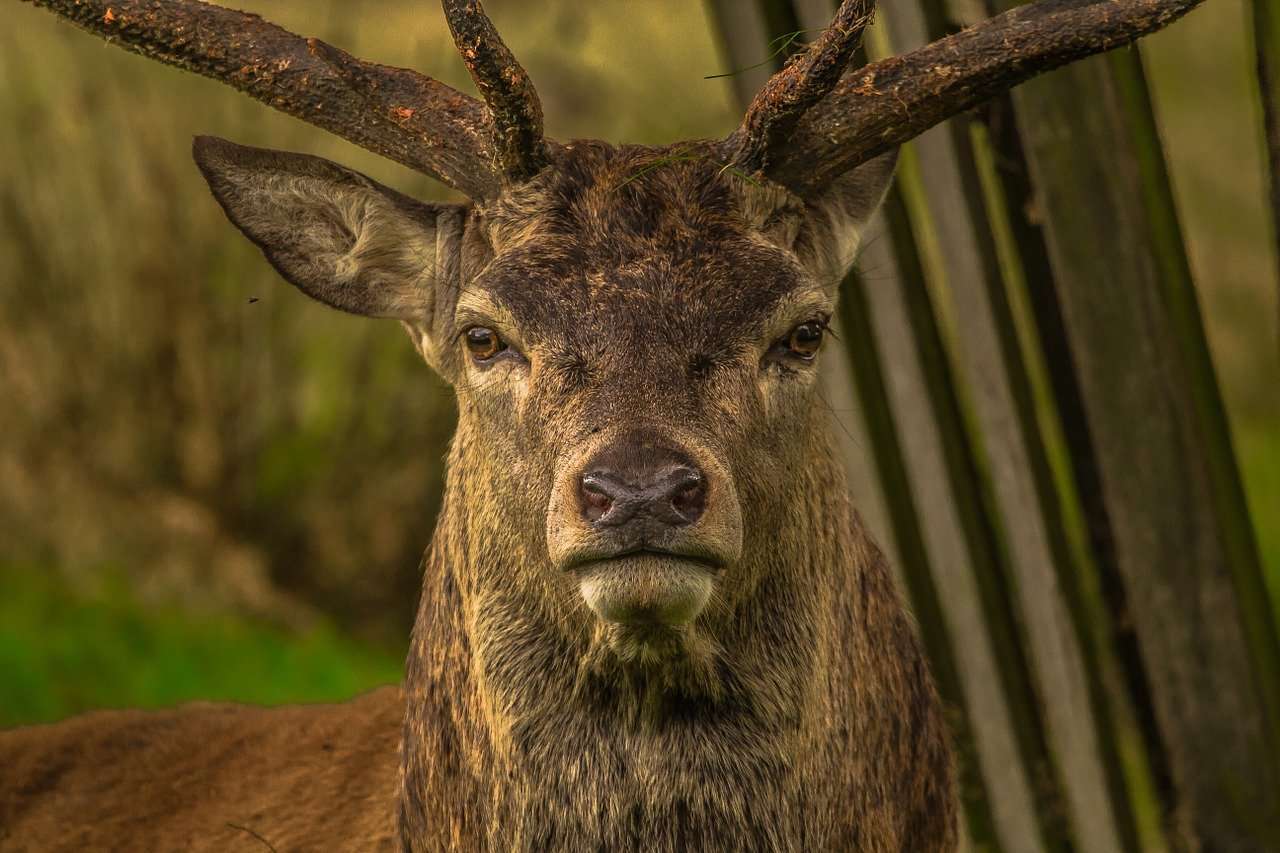
The Scottish red deer (Cervus elaphus scoticus) is a subspecies of red deer that’s native to Scotland. These animals are the largest land mammals in the country and are known for their distinctive red-brown coat and large antlers.
Red deer are renowned for their raucous cries and battles during rutting season when adult males lock antlers to compete for herds of females. The drama of these ruts is quite a spectacle so if you visit Scotland between September and October there’s a good chance you’ll be able to see the action, though you’ll need to bear in mind that they’re pumped up with testosterone and have huge spiky antlers which make them dangerous to approach.
You can see red deer throughout the year but other than when they rut they’re very shy creatures and they’ll no doubt see you long before you see them.
They are herbivores and feed on grasses, herbs, and other plants, and their favourite grazing sites are the edges of forests, but due to the erosion of their habitats from deforestation, they’re now usually found on open hillsides and moorland.
The best time of day to catch sight of them is early morning and evening when it’s quiet, so head to the forests where the biggest herds live at dawn and dusk, such as Galloway Forest Park in southwest Scotland and Glen Affric (a remote region west of Loch Ness).
Book Tours in Scotland
Golden and White-Tailed Eagles
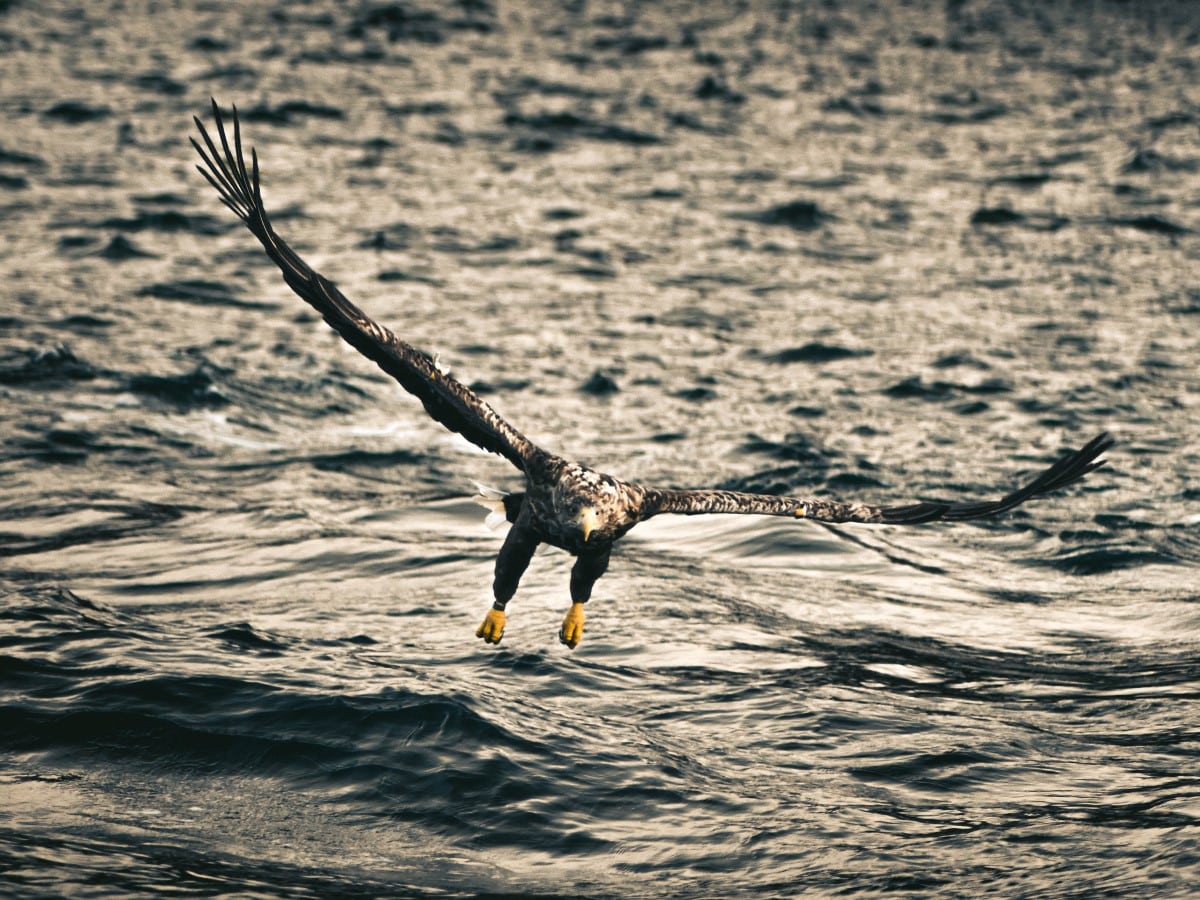
The classic big birds of prey, golden and white-tailed eagles (also known as sea eagles), can be seen gliding across much of Scotland’s wild areas, usually in remote regions that are rarely disturbed by humans.
Golden eagles, in particular, are very sensitive to changes to their habitats so Forestry and Land Scotland (the government body that looks after Scotland’s forests) make sure they don’t cut down any trees near their nests and leave enough open spaces for them to hunt their favourite meals of rabbits, small birds, and the occasional snake.
You’ll often see them soaring over the forests of Argyll and Galloway but perhaps the best places to see them are the Isle of Mull and the Isle of Skye. Having been to both islands I recommend Quinish Point on Mull and Glen Brittle on Skye as good places for eagle spotting.
Sea eagles are even bigger than their golden cousins and fully grown adults have wingspans that are up to 2.4 metres across and bodies that are up to 1 metre in length. They prefer sheltered lochs to hunt for food rather than exposed coastlines but you’ll sometimes see them in coastal forests such as Tentsmuir Nature Reserve in Fife.
Beaver
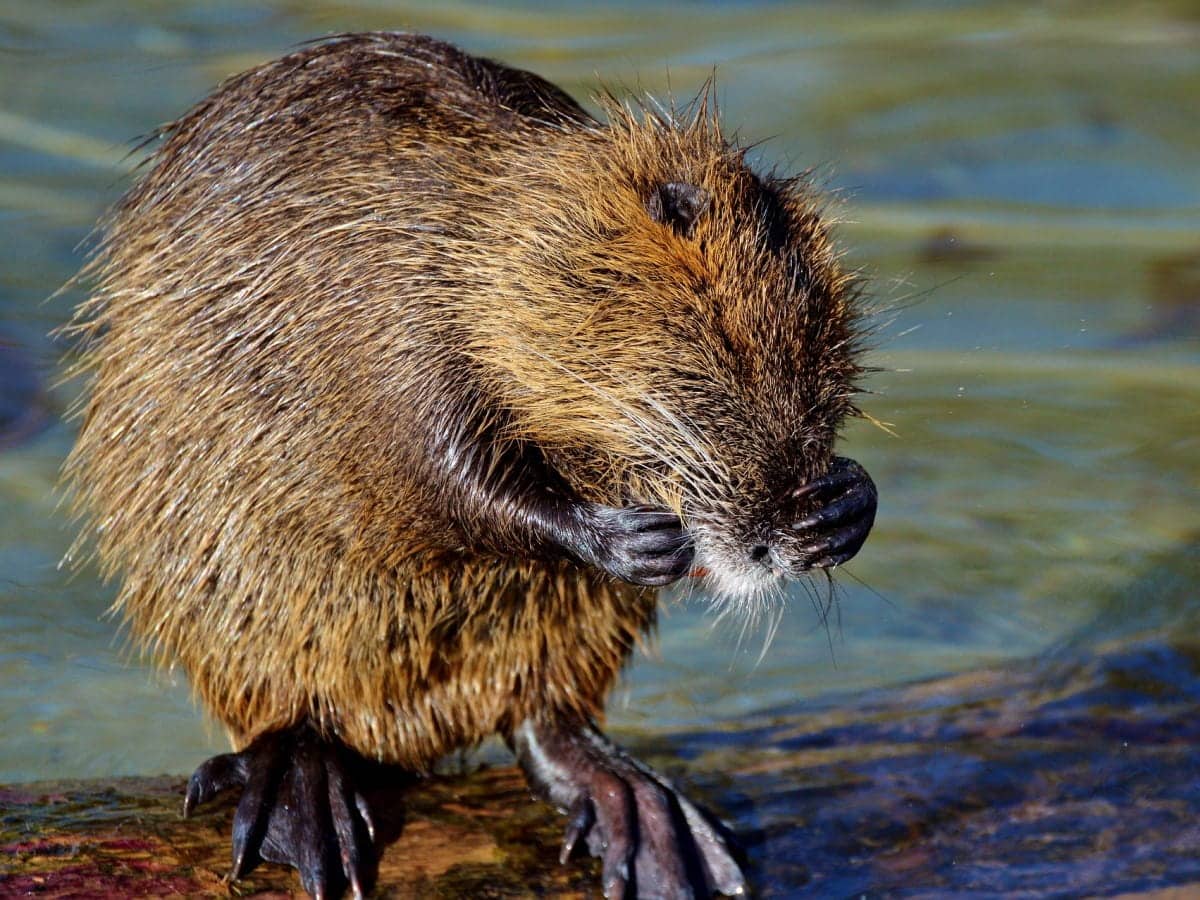
A beaver is a large, semi-aquatic rodent native to North America and Europe. They have thick brown fur, a flat tail, and large incisors which they use to cut down trees and other vegetation to build dams. These dams contain their habitats – called lodges – which keep them hidden away from predators.
The European beaver isn’t an animal that you’d expect to find in Scotland but they’ve been recently introduced to the lochs of Barnluasgan in the heart of Argyll as part of a wildlife management scheme. These newest of Scotland’s wild animals have spent the last decade constructing an array of dams that have formed a natural wetland in the area, and you’ll see evidence of their busy gnawing across a large part of Knapsdale Forest in West Argyll.
Because they’re mostly active at dawn and dusk it’s unlikely you’ll see any walking around, but keep a keen eye on the forest lochs and you might see their broad fat heads poking out of the water throughout the year (unlike many animals in the north of Scotland, beavers don’t hibernate during the winter).
Protect Your Family From Scotland's Biting Midges
- Powerful, reliable protection for up to 8 hours
- Water- and sweat resistant
- Repels midges, mosquitoes, horse flies, sand flies, fleas and ticks
- Safe for use on adults, children over 30 months and pregnant women
- Non-sticky, moisturising with a pleasant fragrance
- Packaging may vary
Butterflies

Although they don’t live for very long (a couple of days to a couple of weeks, depending on the species), Scotland’s beautiful butterflies are one of the country’s favourite wildlife sights.
There are 30 different types of butterflies in Scotland, and they’re all extremely important to the environment as they pollinate plants just like our declining populations of bees do. Unlike bees, butterflies don’t carry pollen all over their bodies and instead only carry it on their legs. But while they might not carry as much pollen as bees, they cover much larger areas and pollinate a greater range of flowers, so they’re vital to Scotland’s ecosystem.
The best places to keep a lookout for these insects are broadleaf and mixed-leaf woodlands that have open grassy areas, although some species prefer partially shaded woodland.
As far as the time of year goes you’ll see the majority of butterflies between April and September as these cold-blooded creatures love warm sunny days when the air temperature is above 14°C and there is sunlight for at least half the day.
Grouse
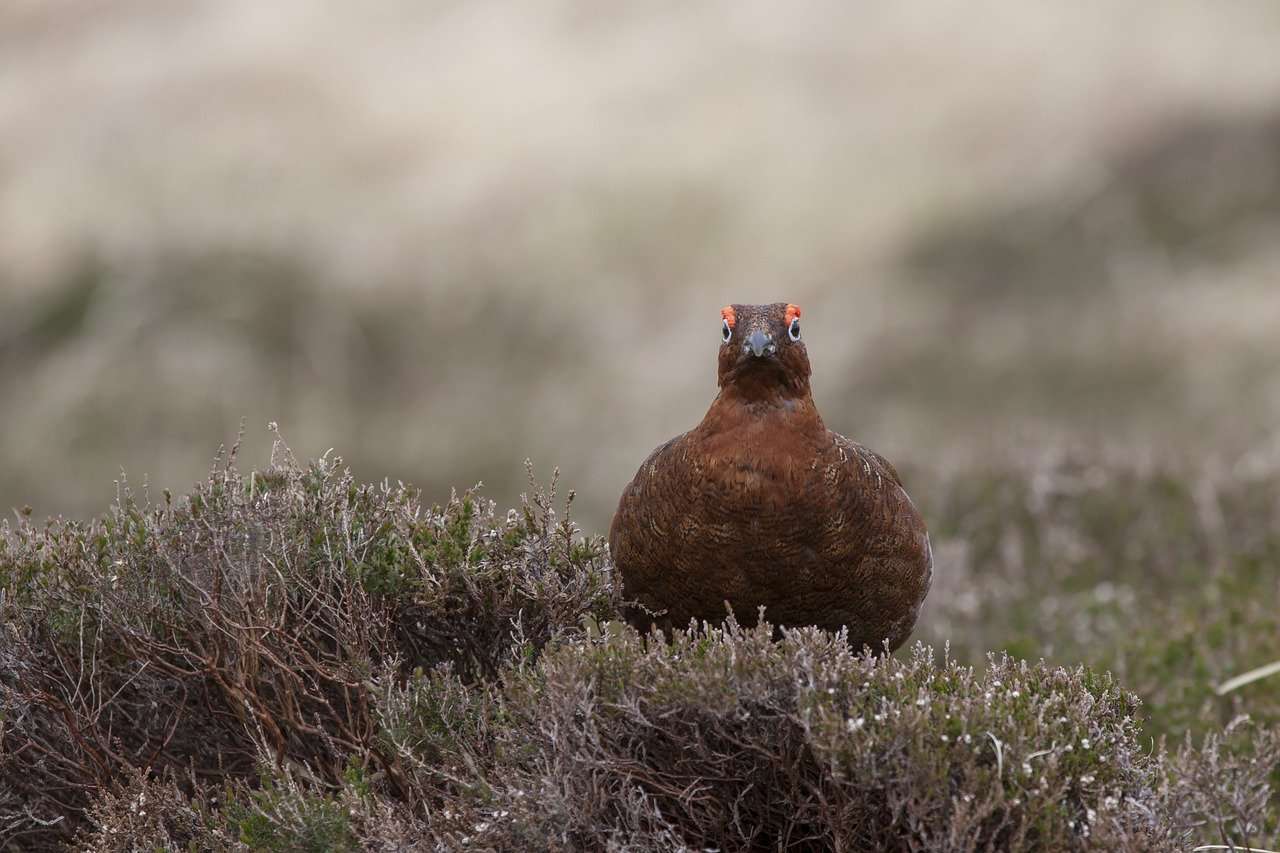
A grouse is a type of bird that belongs to the family Tetraonidae. They are generally small to medium-sized birds with plump bodies, short wings, and strong legs which they use to run away from predators.
There are several different species of grouse in Scotland, which are found in a variety of habitats, including woodlands and grasslands. You’re most likely to see grouse in forests that are comprised of a mix of mature pines and young conifers, but they also like heather moorland, which is a rich source of food (grouse like to graze on plant shoots and berries).
They’re quite a small bird – about the same size as a domestic hen – but they’re very distinctive due to their unmistakable cackling cry and the bright red flashes above each eye. There are many places to watch grouse in Scotland but one of the best is the Mar Lodge Estate National Nature Reserve in the heart of the Cairngorms which is the largest nature reserve in the United Kingdom.
A sub-species of grouse is the capercaillie which is around a third bigger than a normal grouse and is also quite aggressive (especially when they’re nesting) so keep an eye out for them in old coniferous forests which is their preferred habitat. Try not to disturb them during spring because if they’re disturbed even slightly they have been known to abandon their nests.
Book Tours in Scotland
Red Squirrel
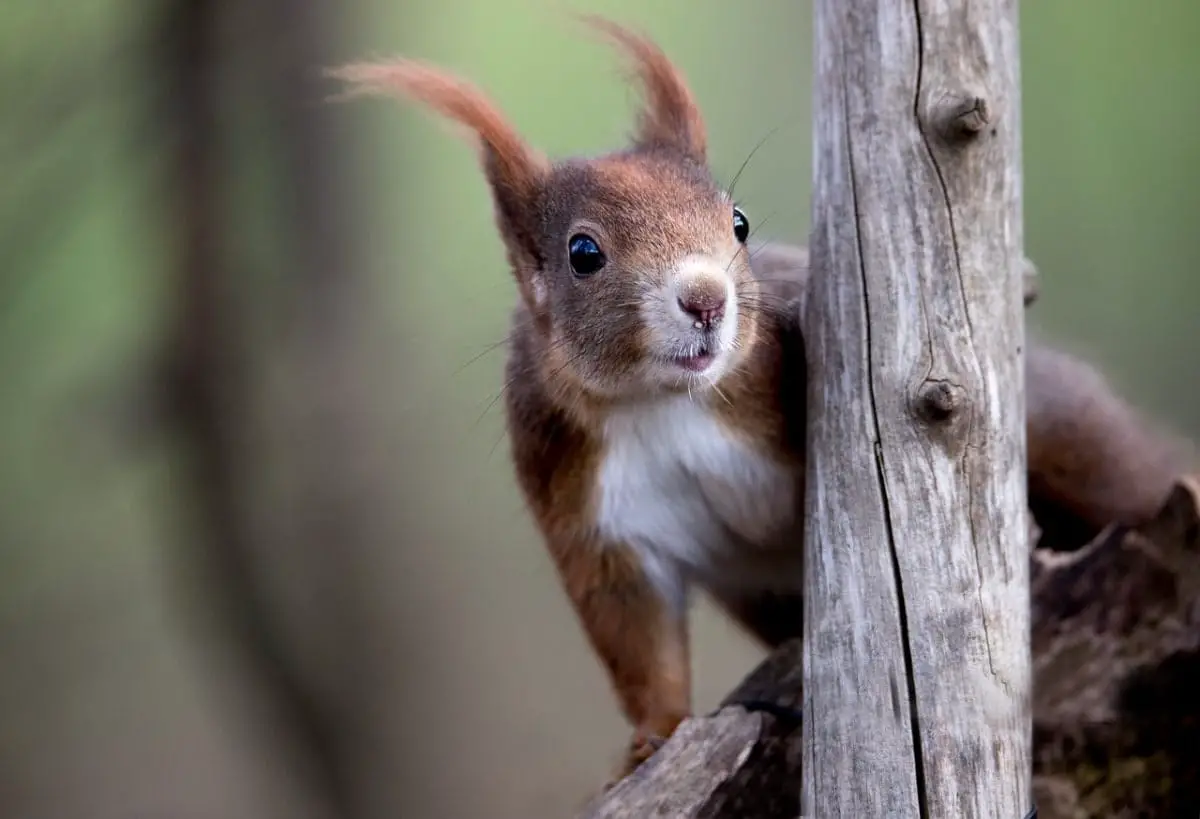
Red squirrels are small mammals that belong to the genus Sciurus. Red squirrels are known for their reddish-brown fur which can vary in shade from a light orange to a black-red colour, as well as their small slender bodies and long bushy tails.
Due to a combination of human habitat destruction and non-native grey squirrels taking over their woodlands, these impossibly cute animals have had a difficult time in recent years. Thankfully though, the sharp decline in red squirrel numbers has been recognized by the government and there are now several schemes in place to increase the population of Scotland’s favourite small mammal.
If you visit Glen Affric, Glenmore Forest Park, and the pine forests of Dumfries and Galloway you’ll almost certainly see a red squirrel or two, although they’re incredibly quick and shy which makes them tricky to see amongst the tree branches.
There are less than 150,000 red squirrels in Britain and the vast majority live in the forests of the Scottish Highlands where they’re surrounded by their favourite food sources of pine, spruce, and larch cone seeds.
They can be seen year-round if the weather is good but they tend to stay in their nests in bad weather. They are most active during their mating season which is January to April. A recommended nature reserve where you’re almost guaranteed to see red squirrels is the Loch of the Lowes near Dunkeld.
Out About Scotland guide: Red squirrels in Scotland
Owls
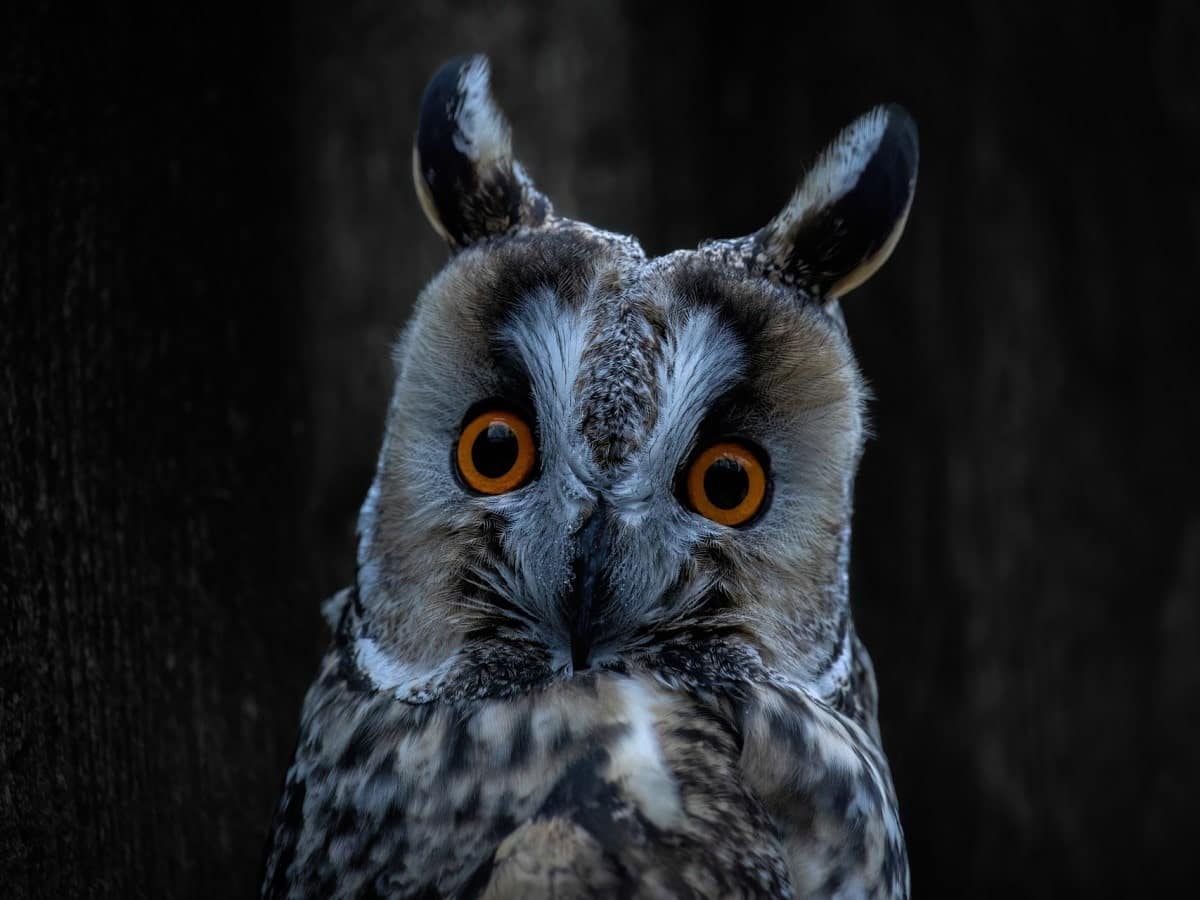
There are several owl species in Britain, but the most prevalent in Scotland’s forests is the secretive long-eared owl. These animals are rarely seen by humans as their camouflage hides them incredibly well inside their favourite habitats of coniferous forests, and coupled with the fact they’re the UK’s most nocturnal owl they’re rarely seen during daylight hours.
Long-eared owls are quite small at just over a foot in body length but they’re unmistakable due to their tufty feathers on either side of their head which they raise up like ears when alarmed (hence the name).
You’re more likely to hear them rather than see them as they have a distinctive call which is a single, long and low ‘hoo’ sound that’s repeated every few seconds. This call is quite low-pitched so the sound carries a long way and can usually be heard over half a mile from where the animal is sitting.
The best place to catch a glimpse of these expert nighttime hunters is wooded areas near open countryside as they like to glide overhead looking for mice and voles scurrying across fields, although they’re not shy of eating snakes, insects, and even small birds.
In Scotland, their numbers are strong throughout the country, but they’re most likely to be found in the south, east, and northeast corners of the country.
Protect Your Family From Scotland's Biting Midges
- Powerful, reliable protection for up to 8 hours
- Water- and sweat resistant
- Repels midges, mosquitoes, horse flies, sand flies, fleas and ticks
- Safe for use on adults, children over 30 months and pregnant women
- Non-sticky, moisturising with a pleasant fragrance
- Packaging may vary
Dolphins
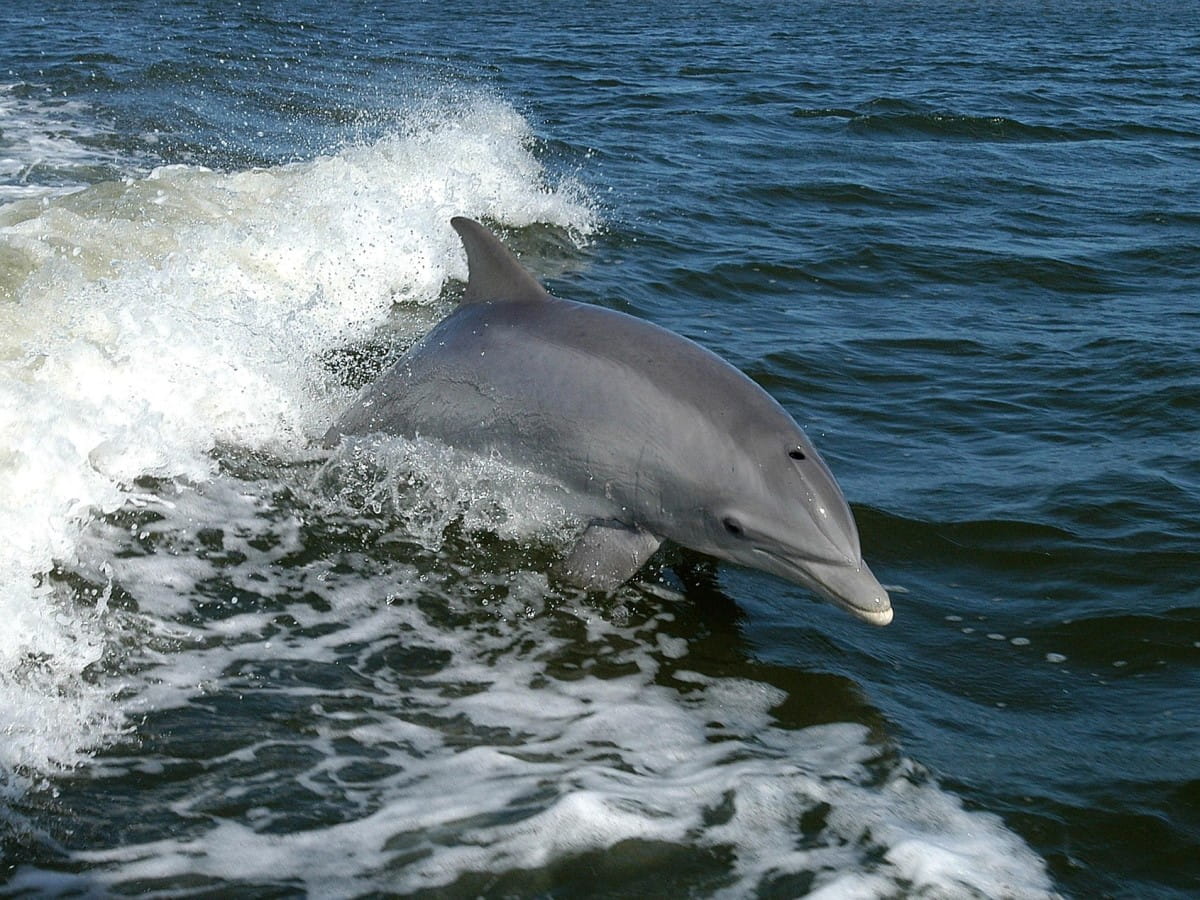
There are more than 20 different species of dolphins and whales around Scotland’s coastline but only 7 are considered native, although some of these migrate so they’re not native in the truest sense. You’ve no doubt already seen harbour porpoises and bottlenose dolphins on your travels, but did you know that Scotland also has resident populations of orcas and minke whales?
If you intend to go dolphin and whale-spotting these are the seven species you need to keep a lookout for:
Harbour porpoise: This is the smallest cetacean found in Scotland and also one of the most often seen sea mammals due to the fact they like to come close to shore in summer – even into sea lochs and river estuaries. The average length of an adult is around 2 metres, and they vary in weight between 50 and 70 kg. They can be seen all around Scotland, but the west coast has the highest numbers.
Bottlenose dolphin: These are one of the most-sighted marine mammals in Scotland after the harbour porpoise. You’ll find bottlenose dolphins around most of the East and West Coasts, as they usually come close to shore to hunt for fish. They’re large animals at 2-4 metres in length and can weigh up to 650kg, although the average for an adult male is ‘only’ around 500kg.
One of the best places to see them is in the Moray Firth near Fort George which is situated north of Inverness.
White-beaked dolphin: These animals are easily identified by the white coloration across their beaks and their stocky bodies. They are, on average, 3 metres in length and weigh up to 350 kg when fully grown. They’re usually found to the north and south of the islands of Harris and Lewis and on the west coast of the Isle of Skye.
Risso’s dolphin: These are large marine animals that grow up to 4 metres in length and weigh an average 500 kg as adults. They have dark grey skin with lighter blotches around their head and mouth. The lifespan of Risso’s dolphins is between 20 and 30 years, and they are most commonly seen in the waters surrounding the Outer Hebrides.
Common dolphin: The defining feature of these dolphins is the size of their pods which occasionally include hundreds of individuals. They are quite sleek with a length of 2 to 3 metres and a weight of just 150 to 200 kg and they can be identified by the yellowish patch on their underside and around their front half.
Whales
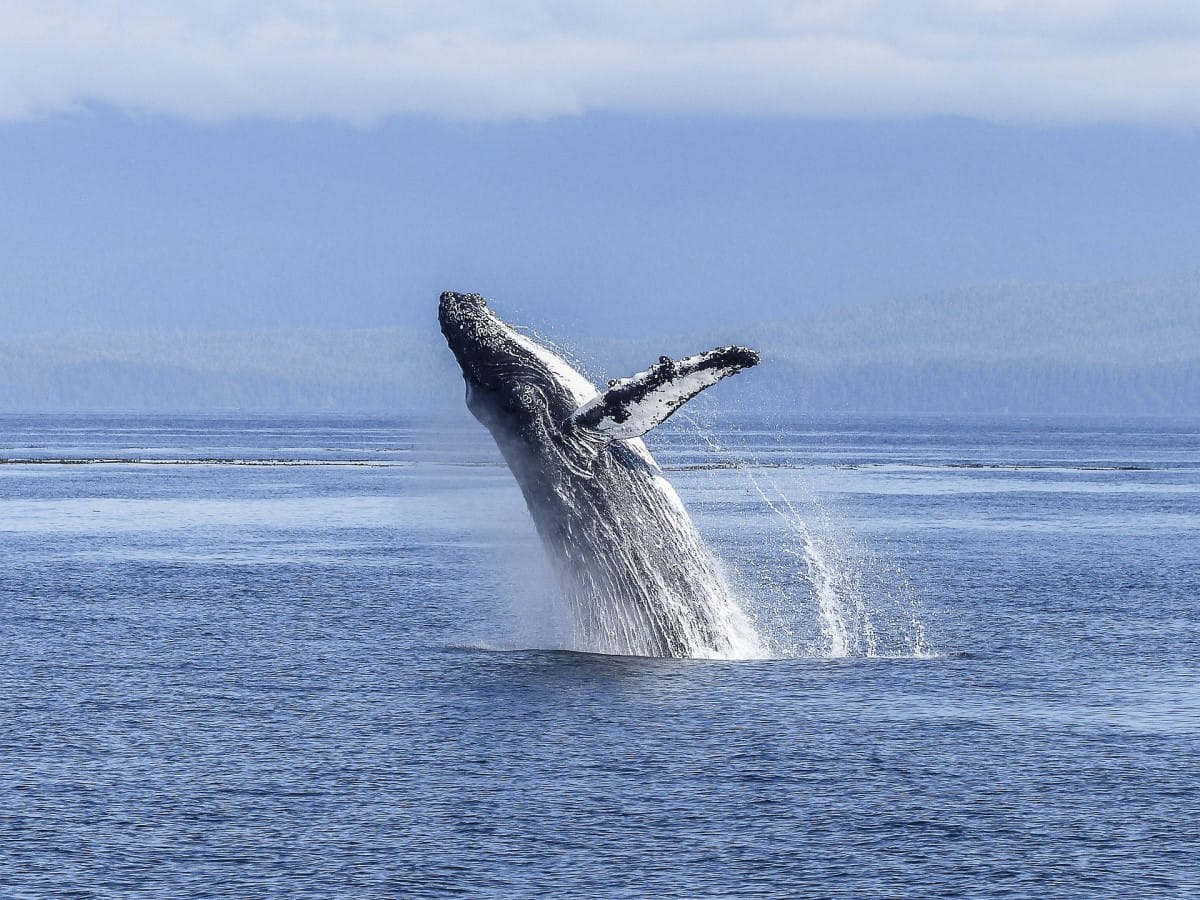
Humpback whale: Humpback whales are large, migratory marine mammals belonging to the family Balaenopteridae and the genus Megaptera. They are known for their distinctive hump-shaped back, long pectoral fins, and unique vocalizations.
Humpback whales are found in all the world’s oceans and are known to migrate long distances each year. They can reach lengths of up to 18 metres and weights of up to 50,000 kg. Humpback whales are known to feed on a variety of prey including krill, small fish, and occasionally larger prey such as squid and herring.
Minke whale: These whales are the most commonly spotted in the seas around Scotland. Minke whales are found across the world, but in Britain, the majority are seen in the Hebrides and the Moray Firth. Adults are between 7 and 9 metres in length and weigh between 5,000 and 6,000 kg on average. They can live for up to 50 years in the wild.
Orca: Also known as killer whales they are mostly found on the northern and eastern coasts of Scotland following shoals of herring and mackerel. Though instantly recognisable by their black bodies and white undersides, the first body part that’s usually sighted is the enormous dorsal fin which is up to 2 metres long on some males. Adult males are between 6 to 8 metres in length and weigh 3,500 to 5,500 kg.
Sperm whale: A sperm whale is a type of toothed whale that’s known for its massive size and distinctive shape. They are the largest toothed whales and the largest predator on Earth, growing up to 20 meters and weighing as much as 57,000 kg.
Sperm whales are found in all the world’s oceans and are known for their deep diving abilities, which they use to hunt for prey such as squid and fish. Sperm whales are social animals that live in groups of up to 50 individuals. They are considered a vulnerable species due to their slow reproduction rate and the impact of human activities such as hunting and pollution.
Book Tours in Scotland
Seals

There are several species of seal that can be found in Scotland. These include:
Grey seals: Grey seals (Halichoerus grypus) are a species of seal that can be found in coastal waters around the world. They are large animals, typically weighing between 200 and 350 kilogrammes and reaching lengths of up to 2.7 metres. Grey seals have a distinctive V-shaped nostril and a broad, round head with a coat of short and coarse fur that is usually grey, although it can range from almost black to almost white.
Harbour seals: Harbor seals (Phoca vitulina) – also known as common seals – are a species of seal that can be found in coastal waters around Scotland.
They are smaller than grey seals, typically weighing between 30 and 70 kilograms and reach lengths of up to 1.8 meters. Harbour seals have slender bodies and pointed snouts with coats of short, sleek fur that is usually brown or grey. Harbour seals are generally solitary animals, although they will gather in large groups during the breeding season to mate and give birth.
Ringed seals: Ringed seals are the smallest seal species found in Scotland and are native to the Arctic. They are not commonly seen in Scotland but may occasionally be found in the colder waters around the northern islands of Shetland and Orkney.
Hooded seals: Hooded seals are another species that are native to the Arctic and are not commonly found in Scotland, though some animals have been spotted on occasion. The large inflatable hoods on their heads, which they use to entice mates, set them apart from other seals.
Frequently Asked Questions
What is the most common wild animal in Scotland?
The most common wild animal in Scotland is the red deer, which is native to the country and can be found in many areas, particularly in the Highlands. They are the largest land mammals in Britain, with males weighing up to 350 kilogrammes and females weighing up to 250 kilogrammes.
Other common wild animals in Scotland include roe deer, which are smaller than red deer and more widespread; otters, which can be found along the coast and in rivers and streams; and various species of birds such as peregrine falcons, golden eagles, and red grouse.
Are there wild predators in Scotland?
There are several species of wild predators in Scotland. The most well-known is the Scottish wildcat, which is a native species and is considered to be one of the rarest and most endangered mammals in the UK.
Other Scottish predators include pine martens, which are small, agile mammals found in wooded areas; red foxes, which are common throughout the country; and badgers, which are found in a variety of habitats, including woodlands, fields, and gardens.
Additionally, Scotland is home to several species of birds of prey, such as golden and sea eagles, peregrine falcons, and ospreys.
What is the largest predator in Scotland?
Britain’s largest land predator is the badger which is known for its distinctive black and white striped face and short, stocky body. They have powerful legs with long claws which they use for digging and burrowing.
Badgers are omnivorous animals, meaning they eat both plants and animals and their diet consists of a variety of foods such as roots, fruit, insects, and small mammals.
Are there wild bears in Scotland?
No wild bears are living in Scotland, but a few are living in captivity. They are one of many extinct Scottish animals that humans hunted and persecuted when the earliest tribes started domesticating farm animals.
In the past, there were large populations of wild brown bears that roamed across Scotland from the Borders to the far north, but they went extinct around 3,000 years ago.
Protect Your Family From Scotland's Biting Midges
- Powerful, reliable protection for up to 8 hours
- Water- and sweat resistant
- Repels midges, mosquitoes, horse flies, sand flies, fleas and ticks
- Safe for use on adults, children over 30 months and pregnant women
- Non-sticky, moisturising with a pleasant fragrance
- Packaging may vary



